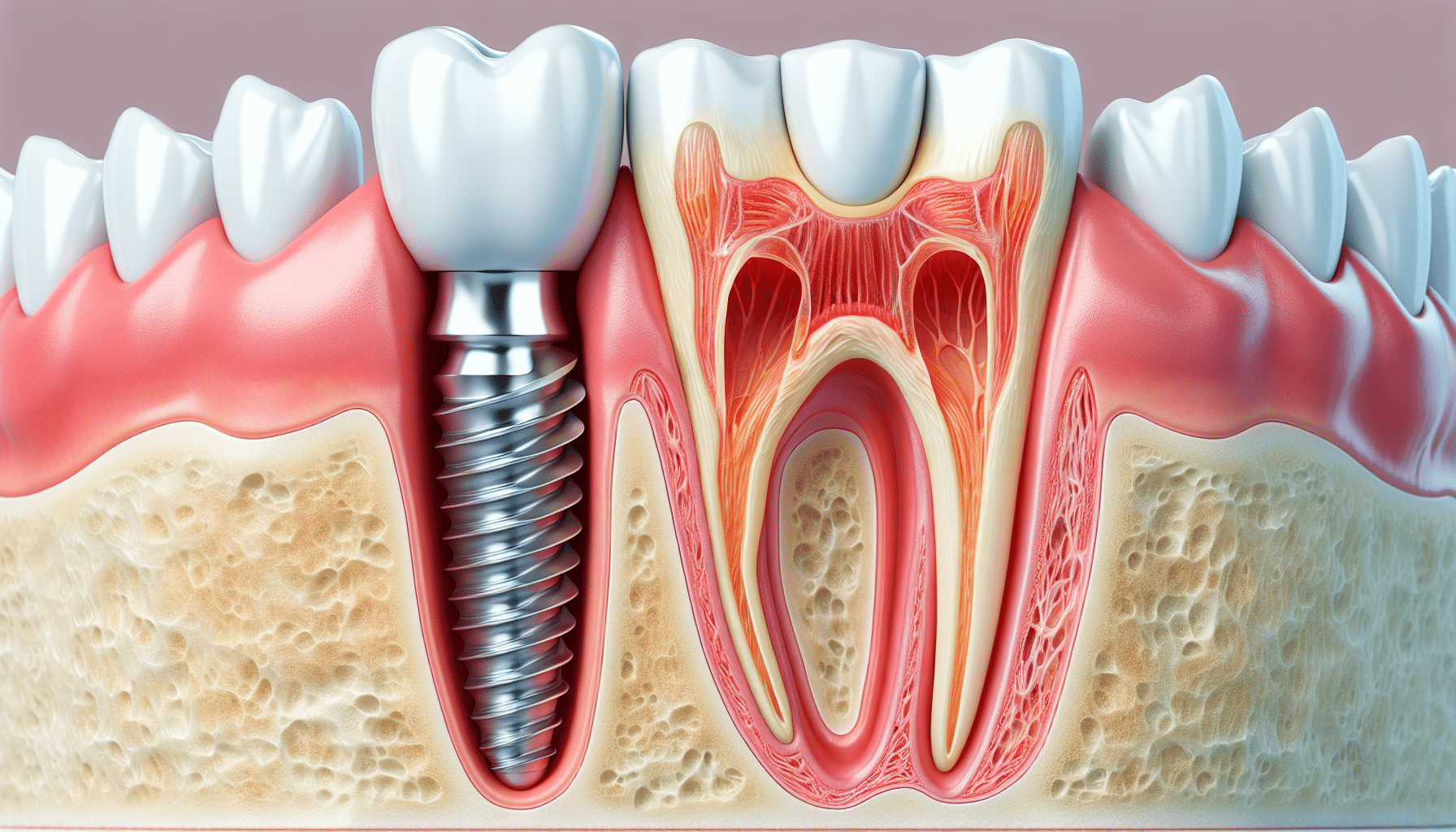The Basic Principles Of Dental Sense
The Basic Principles Of Dental Sense
Blog Article
Not known Details About Dental Sense
Table of ContentsThe Basic Principles Of Dental Sense The smart Trick of Dental Sense That Nobody is DiscussingThe 45-Second Trick For Dental SenseSome Known Details About Dental Sense
are clinical devices operatively implanted into the jaw to restore a person's capacity to eat or their look. They give assistance for artificial (phony) teeth, such as crowns, bridges, or dentures. When a tooth is lost due to injury or disease, an individual can experience complications such as rapid bone loss, defective speech, or changes to chewing patterns that result in discomfort.Oral dental implant systems contain a dental implant body and dental implant abutment and may additionally include an abutment fixation screw. Front tooth filling. The oral implant body is surgically inserted in the jawbone instead of the tooth's root. The oral implant joint is typically connected to the dental implant body by the abutment addiction screw and expands with gums right into the mouth to support the attached artificial teeth
(https://dentalsense1.mystrikingly.com/blog/transform-your-smile-with-dental-implants-root-canal-procedures-and)Framework of The Dental Implant System selecting oral implants, talk to your oral company regarding the possible benefits and dangers, and whether you are a candidate for the procedure. Things to think about: Your general wellness is an important element in figuring out whether you are an excellent prospect for dental implants, for how long it will certainly require to heal, and exactly how long the dental implant might remain in location.
Smoking may impact the recovery process and decrease the long-term success of the implant. The recovery procedure for the dental implant body may take several months or longer, throughout which time you usually have a short-lived joint in place of the tooth. the oral implant treatment: Carefully adhere to the oral hygiene instructions provided to you by your oral company.
Some Ideas on Dental Sense You Need To Know
Implant failure can lead to the requirement for one more procedure to repair or replace the dental implant system. Restores the capacity to eat Recovers aesthetic look Aids maintain the jawbone from reducing as a result of bone loss Protects the health and wellness of the bordering bone and gum tissues Aids maintain adjacent (neighboring) teeth steady Boosts lifestyle Damages to bordering all-natural teeth during dental implant positioning Injury to the surrounding cells during surgical treatment, such as sinus perforation Injury during surgical procedure (for instance, crack of surrounding jawbone) Inadequate function, such as feeling like the teeth do not bite together generally An experience that the tooth hangs or turning in position arising from a joint screw loosening Implant body failure (looseness of the implant body) as a result of systemic infection, which might be more probable in clients with unchecked diabetes mellitus due to local infection in bone and periodontals supporting the implant body due to delayed recovery, which might be a lot more most likely in individuals who smoke Trouble cleaning up the gum tissues around the implant, causing poor oral health Neglected gum illness Post-surgical feeling numb due to nerve impingement or damages Always inform wellness treatment carriers and imaging service technicians that you have dental implants prior to any magnetic vibration imaging (MRI) or x-ray procedures.
FDA is not knowledgeable about any type of damaging events reported for MRI or x-ray treatments with dental implants. Oral implants systems are usually made from materials that comply with global consensus requirements of the International Organization for Standardization (ISO) or ASTM International. These standards have information of what makes a risk-free material.

A dental implant is a framework that replaces a missing out on tooth. With screw-like tools, the surgeon inserts a dental implant into the jawbone, and it acts as an anchor for a synthetic tooth, called a crown.
Our Dental Sense Statements
Some people are not eligible for oral implant surgical treatment. It is for oral cosmetic surgeons to operate individuals with: intense illnessuncontrollable metabolic diseasebone or soft cells disease or infectionIf these issues are dealt with, a person can have the surgical procedure. In, oral surgeons abstain from running on individuals with: If individuals with any of the above undergo oral implant surgery, there is a higher risk of the implant stopping working.

Oral implant surgical treatment is a customized procedure. It's not the same for every person. However the adhering to gives a basic overview of what you can expect your dentist, dental surgeon, periodontist or prosthodontist to do: Put the dental implant operatively. Offer you time to heal. Attach the blog post and final crown, bridge or denture.
Next, your surgeon will meticulously place the dental implant into your jaw. If your implant is near the front of your mouth, your dental practitioner will make a short-lived tooth for you to wear till you recover.
The Single Strategy To Use For Dental Sense
During the recovery phase, your jawbone needs to fuse to the oral implant. This process can take anywhere from three to 9 months.
As soon as your implant heals, your dental expert can attach the abutment (tiny adapter message) and your final restoration (crown, bridge or denture). This usually takes concerning one hour to finish and might call for a 2nd small surgical procedure. You shouldn't feel any type of discomfort during your dental implant procedure because your supplier will certainly make use of drug to numb your periodontals.
Report this page